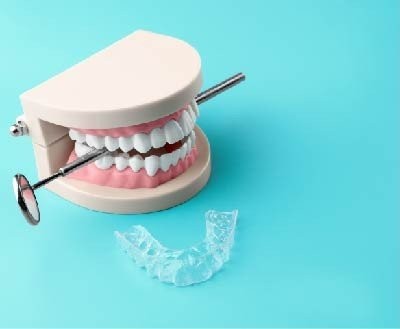

What are the causes of Temporomandibular joint disorders?
Temporomandibular disorder is observed due to the changes occurs commonly in muscle function as a result of pain felt in or near the masticatory system.One of the most observed etiological factors is bruxism ( teeth clenching, grinding) having a habit of unilateral chewing, the history of trauma, force the joint by biting hard or large bites, parafonksiyonel behaviors (nail-biting, chewing gum constantly breathing through the mouth, pipe-smoking, etc.), tumor formation or anatomical factors are among the causes of temporomandibular disorders.
Stress has an important role in pain and dysfunction in the temporomandibular joint. Psychiatric consultation should be obtained in suspicious circumstances.
Some factors are systemic and observed in the temporomandibular joint along with the whole body.
What are the diagnostic methods of temporomandibular disorders?
It consists of clinical, radiological and psychological evaluations.
Following a detailed medical history is taken, the patient is examined. If it is deemed necessary, panoramic X-rays, MRI, CT are the methods to assist diagnosis beside of the examination. Temporomandibular joint disorders may have been caused by many factors. The dentist should refer the patient to the other departments if necessary.
Joint Sounds
A sound like a clicking can be a short-lasting sound.
A Pop sound is a louder sound.
Crepitation is a sound that is referred to as clenching, hard and gravelly, as a friction sound and is more complicated than other sounds.
If your temporomandibular joint sounds, regardless of whether or not you complain of pain, you should be examined by a dentist.
Some of the symptoms of the temporomandibular joint disorder:
If you have pain or difficulty when you are opening your mouth (example yawning)
If your jaw gets stuck, locked, your joints hurtle, if your jaws are often cramped or feeling tired, if you feel pain in your cheeks, temples or ears, if you frequently complain of headaches, neck pain or toothache, then you should consult your dentist.
What treatment methods are employed for temporomandibular joint diseases?
Patient Information: The training of patients about what to pay attention in daily life is the most important part of the treatment.
Physical treatment: It is effective in pain controlling and providing mouth opening. It requires collective work by dentists and physiotherapists.
Medical treatment: Painkillers, relaxants may be employed.
Cold or cold compress application: It is one of the recommended methods for diminishing pain and facilitating the application of exercises.
Arthrosentesis: It is applied in order to replenish the fluid that provides the nutrition and movement of the joints, and to clear the residual substances that produce pain in the joint.
Psychiatric treatment: It has an important effect in minimizing psychological factors.
Splint: It is recommended to be used for an average of 8 hours at night and is a walksplint that can be worn to and removed from the jaw in the form of plaque.
What is the splint for?
It enables the muscles in our jaw to relax, thereby increases bloodshot, feeding and cleaning.
Does the splint cure bruxism (grinding or clenching of the teeth)?
Bruxism is not a curable disease. The use of the splint prevents bruxism from damaging surrounding tissues.
On which jaw should the splints be applied?
Splints may be applied to the submaxilla or maxilla. The dentist shall decide according to the condition such as missing teeth in the mouth, etc..
How long will the splint be used?
Treatment is started as a 6-8 month process. As a result of monthly checks, after 6-8 months, the dentist shall decide whether the splint should be reduced and discontinued or continued to be used. Patients with parafunctional habits, such as grinding or clenching of the teeth at night, may need to use splints for a long time.
How often are the controls carried out in splint treatment?
1 week after the application, the first check must be performed. Once a month, the check should be sustained and, if necessary, corrections should be made.
How should the splint be discontinued?
Splint shall not be discontinued abruptly at the end of treatment. Pursuant to the medical advice, splint use is discontinued by reducing its usage in a way that it is used every two days for the first two weeks and three days for the next two weeks.
Things to take into consideration to avoid temporomandibular joint problems please try to equally use both sides (right and left) of your jaw when chewing food, try to eat small mouthfuls, if you catch yourself grinding or clenching of your teeth during the day, try to check and stop yourself often. If you are grinding or clenching of your teeth at night, you may need to use a splint, please seek medical advice. Don't chew gum, stay away from hard food.
What should be expected from treatment for temporomandibular joint disorder?
In this treatment, which aims to easily maintain functional habits such as being able to talk and eat comfortably and to provide adequate oral openness, if the patient's complaints include a sound like a clicking, etc., the patient should know that there is a possibility that the sound will not cease completely at the end of the treatment.